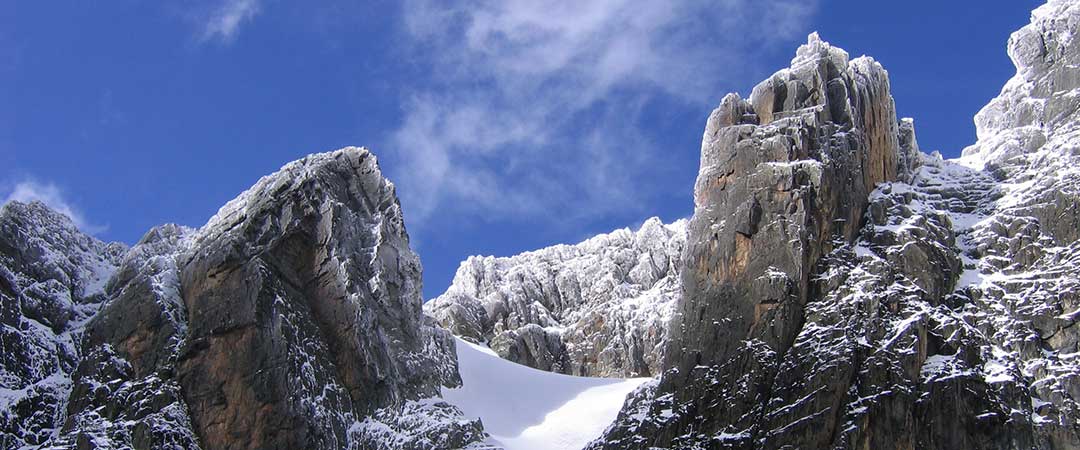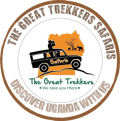At 5,109m – the Margherita peak makes the Rwenzori Mountains national park another mystical challenge, also known as the mountains of the moon.

As early as 150 AD, Alexandrine photographer, Ptolemy wrote of a snow-capped mountain range deep in the heart of Africa, which he claimed was the source of the world’s longest river, The Nile. He called it “Mountains of the Moon.”
Indeed, over the centuries, mountaineers who later explored Ptolemy’s mountains found the high Rwenzori glaciers and snow peaks whose melt waters certainly represent the highest springs of the Nile. The alpine highland of glaciers, snowfields, hot springs and blue cirque lakes make Rwenzori one of Africa’s most beautiful mountain parks. Reaching an elevation of 5,109m, Rwenzori is Africa’s tallest mountain range exceeded in altitude by Mt. Kilimanjaro and Mt Kenya, carrying Africa’s third, fourth and fifth highest peaks that are visible for miles around. Some of its peaks incomparable, beautiful and mist-shrouded carry permanent snow and glaciers, while the lower slopes are covered with dense forest.
The Mountain’s slopes above 1,600m are the preserve of hikers who rate the Rwenzori Mountains to be the most challenging of all African mountains. A variety of large mammals inhibit the lower slopes but the Rwenzori are notable more for their majestic scenery and varied vegetation. Its five distinct vegetation zones montane forest, bamboo forest, tree heath-bog, Hagenia- Rapanea scrub and afro-alpine moorland provide a unique backdrop to one of the most magnificent national parks in the world. Several endangered species and very unusual cloud forest flora like giant heathers, groundsels and lobelias, characterize the ranges as ‘Africa’s botanic big game’.
In 1991, Rwenzori Mountains were gazette as a National Park and is both a World Heritage and RAMSAR site.
WHAT TO SEE IN THE RWENZORI MOUNTAINS
Mountain climbing is the most attractive activity on the legendary “Mountains of the moon” that lies between altitudes 0˚ 06’ South and 0˚ 46’ North and longitudes 29˚ 47’ West and 30˚ 11’ East. Its diverse heavily snow-capped peaks are one of the few pristine and spectacular landscapes of the world.
Although a variety of large mammals inhibit the lower slopes, the Rwenzori’s are notable more for their majestic scenery and varied vegetation. The ranges are scenic with pristine and spectacular landscape that comprise of waterfalls, hot springs, blue cirque lakes, snow clad peaks and stratified vegetation which is an attraction not only for visitors, but also creates potential for research as well as resources for the nearby communities.
The park is also home to 18 species of mammals, 217 species of birds, 9 species of reptiles and 6 species of amphibians. Elephants, buffalos, giant forest hogs, bush bucks, chimpanzees and leopards are present but rarely seen. However primates such as the black and white colobus and the blue monkey may be seen. In the Rwenzori’s are also some unique and rare animal species like the three horned chameleon, the Rwenzori colobus, Rwenzori Turaco and the Rwenzori double collared sunbird.
The park is also a cultural heritage for the neighboring communities. Eighteen sacred sites have been identified, mapped and protected as worship areas.
ACTIVITIES IN RWENZORI MOUNTAINS NATIONAL PARK
Aesthetic values of the Rwenzori’s can be put into three categories of trekking, nature walks and peak climbing:
Trekking
This is done along two routes; a 7-day trekking of the central tourism circuit, and a 5-day trek along Kilembe route to the southern part of the park. Shorter hikes can be arranged.
Nature Walks
Visitors to the park can enjoy nature walks to see the different vegetation especially trees and get up close interaction with nature. While on these walks, you can also get to do bird watching, watch scenic views, waterfalls and more.
Peak Climbing
The six-day loop trail is a tough but rewarding hike taking in all vegetation zones and the glacier peaks. There are ascents to major peaks within the Rwenzori ranges along both routes. These include ascents to Margherita (5,109m) on Mountain Stanley, Vittorio Emmanuelle (4,889m) on Mountain Speke and Edward (4,842m) on Mountain Baker. These hikes offer commanding and panoramic views of other peaks within the ranges. However, high peaks should only be attempted by experienced mountaineers
HOW TO ACCESS THE RWENZORI MOUNTAINS
Rwenzori mountains national park is located near Kasese, western Uganda, bordering Virunga National Park in the Democratic Republic of Congo (DRC) in the West. The Nyakalengija trailhead which is 22km off the Kasese-Fort Portal road and 25km north of Kasese town can be reached from Kampala via Fort Portal road (375km) or via Mbarara and Queen Elizabeth National park (450km).
Transport can also be arranged on chartered flights from Kampala at either Kajjansi or Entebbe International airport.

